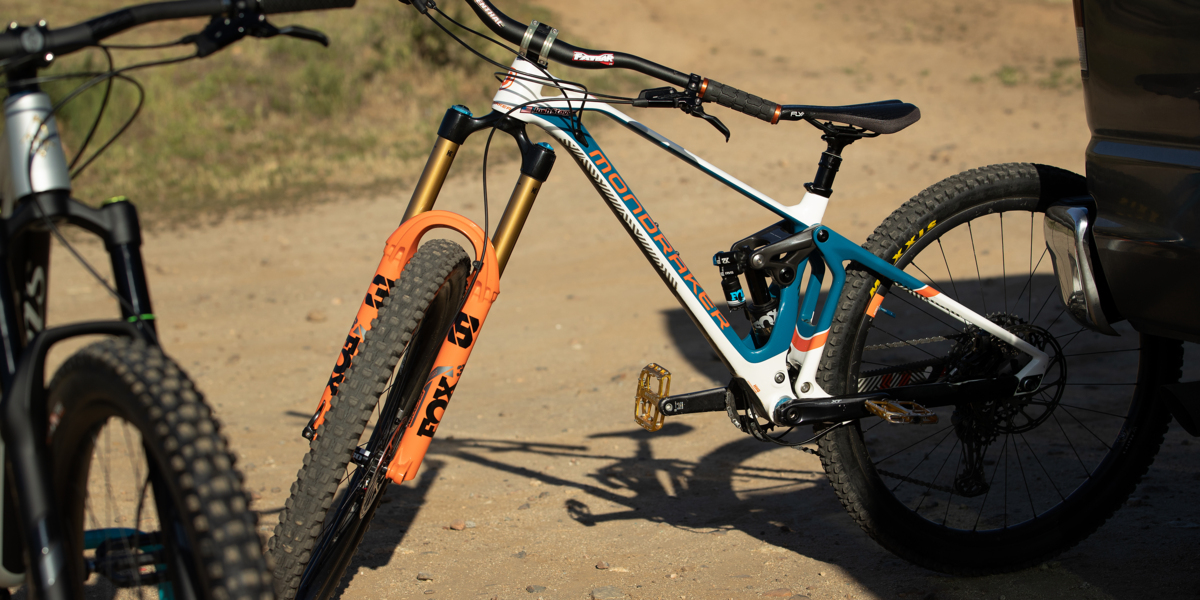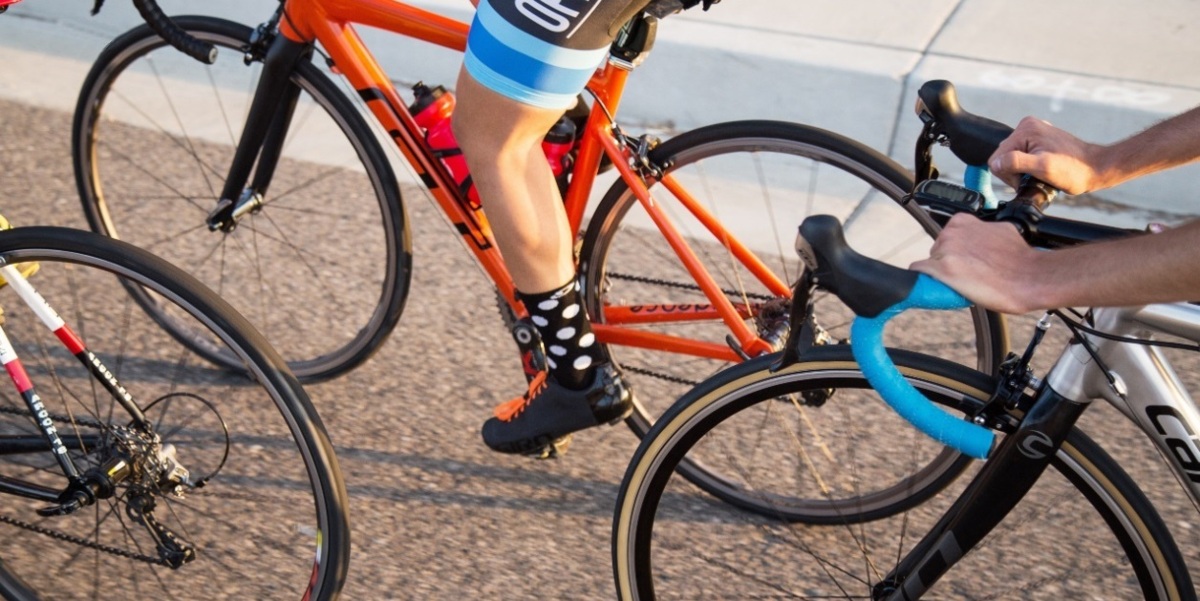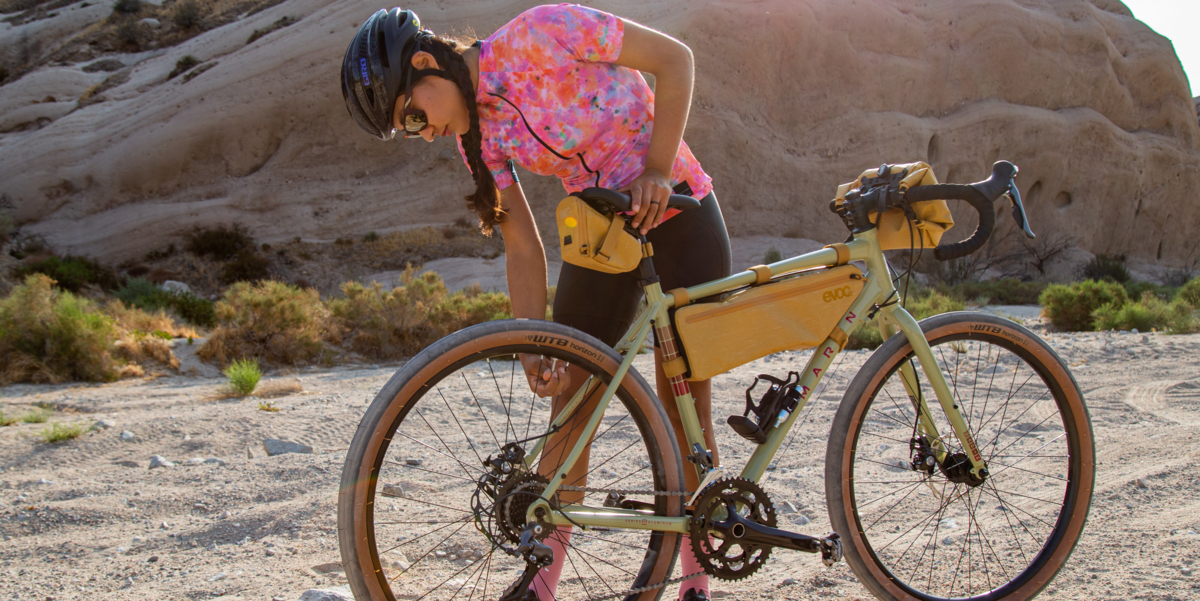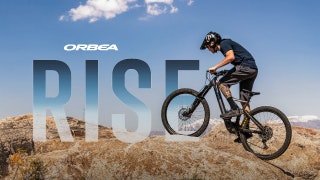Featured Brands
Recommended Products
Get free shipping, on most items, with your $50 purchase today! Same day shipping on most orders if placed by 3pm PST.
PLEASE NOTE:
This offer is only available to physical shipping addresses in the 48 continental United States (no PO Boxes), and some exclusions apply.
Oversize Charges
Some large and/or heavy items are subject to additional oversize charges that are separate from standard shipping costs.
Bike Build Process
All bikes are built, tested, tuned, and ready to ride upon shipment. The bike build process typically takes 2-3 days to complete depending on the bike model and the complexity of the build.
Stock Status
Orders for in-stock items placed by 3PM PST usually ship on the same day. Orders that include special-order or backordered items may be subject to shipping delays depending on product availability. Refer to estimated delivery times in cart when selecting shipping options.

Our Gear Advisors are Ready to Help.

Bicycle tires come in all sizes, disciplines and capabilities, and having the right tires, or not, can make or break your performance on the bike. Not only are there different types of tires (mountain, road, gravel, etc.) that are specific to the type of bike that you have, but there are different sizes and widths, tread patterns, rubber compounds, casing options and more that you will need to take into consideration. This article will teach you about all the different types of bicycle tires for each discipline of cycling, the common tire sizes in each category, signs to look for when considering new rubber, special bike tire features and some frequently asked question regarding new bike tires.
Once you have a better understanding of all the different types of bike tires and the type of tires that are best for you, head back into our website and checkout the vast selection of bike tires JensonUSA offers.
In this article, we’ll teach you about:
There are many different types of bike tires in each category of cycling, and it can be difficult to know which type of tire is best for your bike. Whether you have a mountain bike, road bike, or gravel bike only limits down your choice of tire by so much. Each of these categories has multiple subcategories that call for slightly different or modified tires.

The tamest of the mountain biking disciplines, Cross country riding is characterized by flat trails and steep climbs. Cross-country tires put speed and finesse at the top of their priority list, with tires that feature lightweight casings, low rolling resistance, and small to medium-sized tread.
The most popular subcategory in mountain biking, trail, and all-mountain riding can be summed up as a blend of cross country and enduro-style riding. Trail and all-mountain tires become wider, more durable, and often feature more aggressive tread patterns that have a balance between grip and speed.
Mountain riding taken to the next level. Enduro riding can be described as a blend of aggressive all-mountain riding with a touch of some downhill madness. Enduro tires feature aggressive tread patterns, with medium to large tread profiles, more durable casings, and rubber compounds that grip the dirt.
When sending it down is the only way to go. Downhill riding is as intense as mountain biking gets and is reserved for the steepest lines and roughest terrain. Downhill tires feature aggressive tread profiles with ultra-durable casings and rubber compounds that specialize in grip.

Designed for riders interested in pure performance and speed. These tires are supple, provide enhanced grip in the corners and have a lower rolling resistance than endurance tires.
Best for gran fondos, long-distance riding, and training. These tires are often significantly more durable than their racing counterparts but will have a slightly higher rolling resistance.
If you're the type of rider that prefers riding a bike to work instead of driving, these are the tires for you. These tires have exceptional durability and are wider for extra comfort.

Perhaps the most versatile tires out there. Whether you're riding hardpack, pavement, loose, muddy, or sandy conditions, there are gravel tires for you. These are wider than cyclocross tires and can come in either 650b or 700c sizes.
Cyclocross tires usually come in maximum size of 700 x 33mm. This is the UCI standard. There are various tread patterns that work for different conditions ranging from hardpack, to loose over hard, to sandy conditions. Whatever the race conditions are, you'll find the right tires here.
Bikepacking is all about exploring new locations and leaving civilization behind. When you're miles from the road, you'll want tires that you can trust. Bikepacking tires are more robust and able to handle heavier weights better than gravel tires.
Different cycling disciplines have different sized tires. Frame specifications, weight savings, capability and traction all play a part in what size tires your bike will have. Of course, there are some subcategories that share a boundary with others, and this chart is just a general layout of all the major cycling disciplines.
| Size | Discipline | ISO Designation |
| 700c x 23mm – 32mm | Road/Track | 622 |
| 700c x 35mm – 50mm | Gravel and Mixed surface | 622 |
| 650b x 23mm – 25mm | Small road bikes | 584 |
| 650b x 45mm – 50mm | Gravel and Bikepacking | 584 |
| 26” x 2.1” – 2.3” | Cross Country MTB | 559 |
| 26” x 2.3” – 2.5” | Trail | 559 |
| 26” x 2.4” – 2.6” | Enduro/ Downhill | 559 |
| 27.5” x 2.1” – 2.3” | Cross Country MTB/ Gravel | 584 |
| 27.5” x 2.3” – 2.5” | Trail | 584 |
| 27.5” x 2.4” – 2.6” | Enduro and Downhill | 584 |
| 29” x 2.1” – 2.3” | Cross Country MTB | 622 |
| 29” x 2.3” – 2.5” | Trail | 622 |
| 29” x 2.4” – 2.6” | Enduro and Downhill | 622 |
There are many factors that determine when your tires should be replaced. Worn down tread, a loss of traction, old, cracking rubber, or damage to your tires are all indications that you should start to look for some new tires.
Extra grippy tires, extra wide tires, tubeless tires, snow and ice tires, puncture-resistant tires, you name it there is probably a tire made for your needs. Here are some of the special features found in tires:
Tires with any of these special features will be more expensive than your average tire. With that being said, all of these special features offer significant performance advantages, and many riders find that going with tires that, for example, are tubeless and have an upgraded rubber compound, have huge benefits that outweigh the costs. No matter what type of tire technologies you are looking for, JensonUSA carries a huge selection of all types of tires and are sure to have something that will fit your needs.
Maxxis, Schwalbe, Continental, Vittoria and Specialized all make top-quaility road, gravel and mountain bike tires.
Bike tires vary greatly in price, and like most things, you get what you pay for. More advanced rubber compounds and more protective casing options will cost more than a standard tire. Mountain bike tires range from $50 to $100. Gravel bike tires range from $40 to $90. Road bike tires range from $40-$100.
Mountain bike tires can be divided up into four categories: cross country, trail/all-mountain, enduro and downhill tires. Road tires have three separate categories: performance/racing tires, endurance tires and commuting tires. Gravel bike tires have three categories: gravel tires, cyclocross tires and bikepacking tires.
How long bike tires last depends on multiple factors. How soft or hard the rubber is, how often you ride, how you ride, and the conditions you ride in all play a significant factor in how long your tires will last. In addition, other factors such as riding a dirt tire on pavement for extended amounts of time and skidding your tires through turns can speed up the wear process on your tires. Regardless, you should expect to get a couple thousand miles from your tires.
SHOP NOW
SHIP ALMOST ANYTHING & SAVE
SHOP NOW
SHOP NOW
SHOP NOW





Follow Jensonusa